VWAM Expo: VMA Members Highlight New Products
Much of the business conducted at Valve World Americas Expo & Conference, July 15-16, was done on the 39,000-square-foot exhibit floor at the George R.
#VMAnews
Here’s a look at some of the products featured by members at the expo:
FAIL-SAFE ACTUATORS
A special feature of the AUMA FQM is variable running speed during fail-safe operation. The soft end position approach of the valve is achieved by reduced speed, which also avoids pressure peaks within the pipeline and preserves the valve.
AXIAL-FLOW CHECK VALVE
featured its new BNC Check Valve, a nozzle-style, axial-flow check valve specifically designed to excel in high-pressure applications. The product is significant because many natural gas companies and other power industries are placing their pipelines below ground so they are looking for a one-piece valve they can weld in and bury. This check valve answers the demand with a precision nozzle-style valve that uses axial-flow technology to eliminate turbulence and prevent erosion and vibration. The design reduces downtime and maintenance costs, and boosts capacity and accuracy.
The valve also provides a critical service to the power industry because the valve’s enhanced leak proofing under high pressure virtually eliminates acid and chemical leakage. The valve is a spring-assisted, center-guided, non-slam check valve with an in-line globe-style body with butt weld ends and the seat integral to the valve body.
METAL-SEATED BALL VALVE FOR SEVERE-SERVICE
introduced the Fisher Z500 line of metal-seated ball valves into its severe service portfolio. Fisher Z500 metal-seated valves are engineered to withstand higher temperatures, pressures and more erosive conditions than a standard on/off ball valve, providing increased reliability and protection of critical assets in demanding applications. A bi-directional sealing design offers a unique solution to process back pressure and shutoff requirements in both flow directions, safeguarding control valves and other equipment in the line.
The valves are designed with an integral metal seat and self-energized metal body gasket to help eliminate leak paths and withstand extreme temperature changes. Live-loaded packing, side-mounted brackets and fixed centerlines reduce side loads on the packing and decrease overall wear for a longer service life.
Emerson Process Management also showed the new Bettis EHO Electro-Hydraulic Operator, which uses a dependable spring-return actuator for the fail-safe stroke combined with an integral hydraulic power pack and electronic control module for remote valve operation. The versatile new electro-hydraulic operator is designed for the toughest environments and critical applications. This means an actuator system with field-proven technology and a single source of accountability.
INTERLOCKED CHANGEOVER VALVE COMBINATION
displayed its new, combined changeover and pressure relief valve product. Changeover valves are useful for critical services involving toxic, aggressive, or corrosive fluids that pose a threat to people, plants or the environment, and for instances when discharging into a closed collection system is required. Changeover valves ensure that one pressure relief valve is always in service on a given pipeline; therefore, they are critical in preventing the involuntary isolation of the safety relief devices.
PARTIAL STROKE TESTING DEVICE
made the XRCISER Partial Stroke Testing Device (PSTD) available as an option on all Q, F and L-Series actuators. The PSTD offers unmatched capabilities including remote operation and assurance against over-travel. It works equally well with small, medium and large actuators, has no detrimental effect on actuator speed or function, has a changeable stroke amount, provides 100% of the base actuator’s output torque, and offers both diagnostics and redundancy. The device is constructed of ductile iron and 316 stainless steel and can face temperatures ranging from -60⁰F (-51⁰C) to 400⁰F (204⁰C). Its cycle times are as fast as 0.2 seconds.
STATE-OF-THE-ART DIAGNOSTIC
featured the new Digital Epic-2 valve control, a second-generation, transmitter-based intelligent device that provides the ultimate in functionality at a realistic cost. Its state-of-the-art diagnostic offers partial stroke testing, emergency shutdown, solenoid-operated valve testing and full stroke testing. All functions can be carried out effectively to maintain safety integrity level up to a 3.
The new device provides smart valve communication that enables plant operators to identify current operating condition as well as verify valve health. It also allows plant personnel to carry out predictive maintenance before a failure occurs, which keeps service interruptions to a minimum.
POLYMER SEALS
showed off its OmniSeal high-performance spring-energized polymer seals, which are capable of handling extreme service conditions. The seals are used where ultra-low friction, chemical compatibility and extreme temperature is required. Originally developed to meet severe conditions encountered in turbine engines, rockets and missiles, these seals were later used in service to the most challenging oil and gas applications. The products are designed to fit in all standard hardware glands and can face temperatures of -450°F (-268°C) to 600°F (316°C) as well as vacuum of up to 50,000 psi.
PILOT-OPERATED PRESSURE RELIEF VALVE
revealed its expanded Anderson Greenwood pressure relief product line through launch of an improved design for its pilot-operated pressure relief valve model for LNG storage in on- and offshore applications. The new model offers LNG operators a key advantage by increasing flow capacity by 30%, enabling the design and construction of larger storage tanks without the need to increase valve sizes. In addition, the compact new model minimizes equipment footprint, which is especially critical for LNG vessels where space is limited. The valve’s increased robustness and durability also provide significant savings on overall maintenance costs, as it requires less frequent and easier repair services.
The new model has sturdy body casting and simplified trim design for easier maintenance. Its pilot, mounted directly on the valve cap, provides a lower and more compact valve profile and increases its sturdiness for more stable flows.
HIGH-PERFORMANCE METAL-SEATED BALL VALVES
featured its high-performance product line including the new severe service metal-seated ball valves. The company showed the Bray/McCannalok valve with Iconel 718 meal seat, which is tested for control, strength and flexibility in high temperatures, and the Bray/McCannalok cryogenic high performance valve, which provides the same quality in cold temperatures. It also showed the Series M4 Severe-Tek Severe Service, a high-performance metal-seated ball valve designed for the power generation industry.
SELF-CONTAINED ACTUATOR
Rotork also has enhanced the range by introducing a range of spring return actuators with a torque range of 2,000Nm to 20,000Nm, which offers a wide choice of operating speeds, additional emergency shutdown options with single or dual inputs and enhancements to partial stroking to meet a wide range of applications.
CSV VALVE LINE
showed its new Pacific CSV line of cast steel gate, globe and check valves, which provide the highest level of quality and performance in demanding applications. The valves are subject to Crane’s rigorous development and testing process. Each is uniquely built and tested per API 598 standards to offer exceptional performance in the global oil and gas, petrochemical, power and refining industries. The globe valves also comply to API 623 standard released specifically for globe valves. With higher Cv rates and lower operating torques than alternative valve types, the new valves deliver superior value to users in demanding applications.
LINE BREAK CONTROL
brought its Automatic Line Break Control module, designed to automatically close main pipeline valves in the case of a major leak or break. By quickly and reliably closing the main pipeline block valves, gas loss can be minimized to prevent fires and other catastrophic losses. The module senses a pipeline break or major leak through a unique rate-of-drop circuit. This circuit consists of a differential pilot valve, which senses pipeline pressure and compares it with the gas in a reference tank at the normal pipeline pressure.
When the pressure in the pipeline decreases, the pressure in the reference tank also decreases, but at a rate dictated by a calibrated orifice. This establishes a differential pressure between the reference tank and the pilot connected directly to the pipeline. The rate of pressure differential drop is indicative of the severity of pipeline gas loss. The differential pilot valve, set at a calibrated setpoint, senses the rate of drop and when the pilot valve trips, the actuator is activated to close the main pipeline valve.
Genilee Parente is managing editor of VALVE Magazine. Reach her at gparente@vma.org.
RELATED CONTENT
-
Virtual Valve Forum and Basics Event Draws Attendees from Across the Industry
More than 200 people from across the valve industry participated virtually in the VMA Valve Forum and Valve Basics event, which included 4 days of presentations on technical, manufacturing, management and marketing, valves 101, and valve repair.
-
Solenoid Valves: Direct Acting vs. Pilot-Operated
While presenting in a recent VMA Valve Basics 101 Course in Houston, I found myself in a familiar role: explaining solenoid valves (SOVs) to attendees. (I work with solenoids so much that one VMA member at that conference joked that I needed to be wearing an I Heart Solenoids t-shirt). During the hands-on “petting zoo” portion of the program, which involves smaller groups of attendees, one of the most frequently asked questions I get from people came up: What’s the difference between direct-acting and pilot-operated SOVs, and how do we make a choice?
-
Valves in Oxygen Service
In his presentation at VMA’s 2017 Technical Seminar, Kurt Larson, a process control engineer for Air Products, spoke about the inherent danger of the oxygen production business and how it is particularly important for end users and valve manufacturers to work closely together.






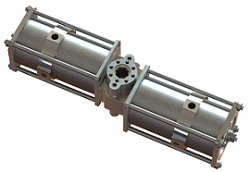

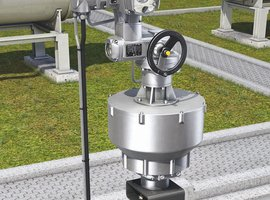
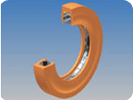

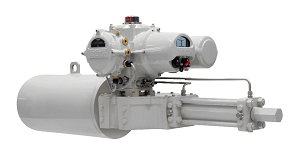

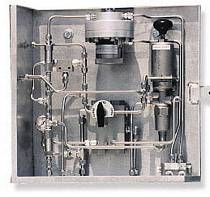
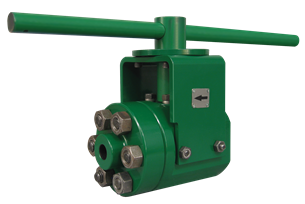
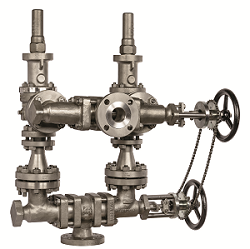



 Unloading large gate valve.jpg;maxWidth=214)


